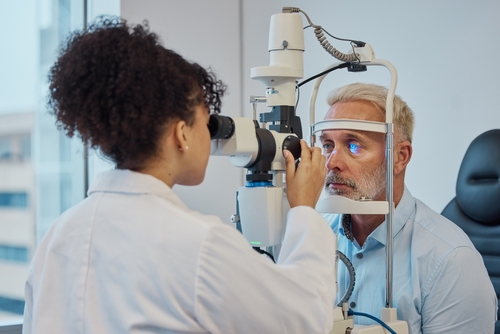
Diabetic eye disease or diabetic retinopathy is a complication of diabetes that affects the eyes and can lead to vision loss. It happens when blood vessels in your retina get damaged.
The retina is the light-sensitive tissue that lines the back of your eye. Anyone with type one or type two diabetes can develop diabetic eye disease.
Keep reading to learn more about diabetic eye disease!
How Does Diabetic Eye Disease Cause Vision Loss?
For some people, the blood vessels damaged by diabetic eye disease can swell and leak blood or fluid. In others, excessive sugar in the blood might cause blockages in the blood vessels, cutting off the retina’s blood supply.
Consequently, the eye can try to grow new blood vessels on the surface of the retina. The new blood vessels are usually abnormal and delicate and may bleed into the eye. All these changes may cause vision loss.
What Are the Symptoms of Diabetic Eye Disease?
There are often no symptoms in the early stages of diabetic eye disease. But as the condition progresses, you may experience the following:
- Blurred vision
- Fluctuating vision
- Floaters or spots in your vision
- Blank or dark areas in your field of vision
- Vision loss
How Do Eye Doctors Diagnose Diabetic Eye Disease?
Your ophthalmologist may perform the following tests to diagnose diabetic retinopathy:
Visual Acuity
A visual acuity test measures how well your eye can see details at various distances. The test can uncover problems such as vision loss.
Pupil Dilation
Dilating your pupils allows your doctor to closely examine your retina, optic nerve, macula, and vitreous. In order to dilate your eyes, your eye doctor will apply drops and wait for them to take effect.
Optical Coherence Tomography
The test uses light waves to produce detailed images of your retina. Using the images, your eye doctor can check for fluid in the retina.
Fundus Fluorescein Angiography (FFA)
FFA is a test that involves injecting a dye into your arm. The dye travels to your eye and eventually gets to the blood vessels in your retina, causing them to shine brightly.
A special camera is then used to take photos of your retina and blood vessels. From the pictures, your eye doctor can tell which blood vessels are leaking, broken, or blocked.
How is Diabetic Eye Disease Treated?
Treatment will depend on the severity of your condition and is aimed at slowing or stopping the progression of diabetic retinopathy.
Watchful Waiting
You might not require treatment immediately if you have mild to moderate diabetic retinopathy. Instead, your ophthalmologist will closely monitor changes to determine when to start treatment.
Additionally, properly managing your blood sugar can aid in slowing the progression of diabetic retinopathy.
Anti-VEGF Injections
Vascular endothelial growth factor (VEGF) is a protein that encourages the growth of new, weak blood vessels in your retina. With anti-VEGF injections, a special medication is injected into your vitreous, which is the fluid that fills the center of your eyes.
The injections block the effects of VEGF, slowing or stopping the growth of abnormal blood vessels. Anti-VEGF injections are repeated on an ongoing basis to control diabetic eye disease effectively.
Laser Photocoagulation
Photocoagulation is used to slow or stop the leakage of fluid and blood in your eye. During the treatment, your eye doctor destroys new blood vessels and seals leaking ones with a laser.
Protect Your Sight from Diabetic Eye Disease
If you have diabetes, you should get your eyes checked regularly by your eye doctor at Morganton Eye. Regular eye exams will significantly reduce the risk of vision loss by catching diabetic eye disease early when treatment is most effective.
Are you experiencing symptoms of diabetic eye disease? Schedule an appointment at Morganton Eye Physicians in Rutherford College, NC, today!
